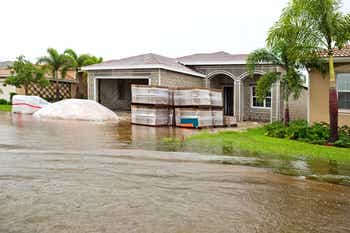El Niño is a weather phenomenon in the Pacific Ocean and can significantly impact weather patterns worldwide. In early June 2023, the National Oceanic and Atmospheric Administration’s (NOAA) Climate Prediction Center officially declared El Niño to have emerged, with conditions expected to gradually strengthen into the winter. In this blog, we will discuss some tips on how to prepare for El Niño.
What is El Niño?
El Niño occurs when the Pacific Ocean’s water temperature becomes abnormally warm near the equator, and east winds blow weaker than usual. This seemingly small change can dramatically impact weather throughout the United States. It typically means:
- More rain in the southern part of the country
- Cooler temperatures in the Desert Southwest
- Southern Plains and Northern Gulf Coast
- Warmer temperatures in northern states from the Pacific Northwest all the way across the country to the Northeast
- Less rain and snowfall for the Ohio Valley, Great Lakes, and Northern Rockies
How to Prepare for El Niño
Mother Nature answers to no one, but there are things you can do during the calm before the storm to help minimize the damage. Here are a few things you can do to protect your family, pets, and personal property when the rain begins to fall.
1. Update Your Homeowners Insurance and Inventory List
Homeowners insurance policies protect personal property, but many policyholders neglect to update them when purchases and home renovations are made. The best practice is to review and update your policy once a year. Ask yourself: Do I have the coverage I need to replace my valuables and home if they are damaged or destroyed?
Also, create an inventory list to document your personal property and keep it in a water-safe, fire-resistant box. This will help you determine the amount of coverage you need and simplify the claim process should you suffer a loss. If you rent, consider renters insurance to help protect your personal property in the event you suffer weather damage or other covered loss.
2. National Flood Insurance
Standard homeowners and renters insurance policies typically do not cover flood and mudflow damage. Recent drought and fires in the West could lead to dangerous consequences when the rains fall because many hillsides have been stripped of vegetation that holds them in place. With these anchors gone, the heavy rains could weaken the hillsides and create severe mudslides.
Flash flooding is also a real possibility because the hard, dried-out soil doesn’t absorb as much water. This can lead to sudden, fast-moving water, which can cause a lot of damage. Check the flood map to see if your home is located in a flood plain, and purchase National Flood Insurance if you feel your property is at risk.
3. Disaster Planning
Create a disaster kit and emergency plan so you’re prepared. For your emergency plan, outline a communication strategy with your family, establish an emergency meet-up location, and escape routes if your home becomes unsafe. In your disaster kit, include plenty of non-perishables (canned and dried foods), blankets, extra clothes, flashlights, batteries, phone chargers, and first-aid supplies.
The Federal Emergency Management Agency (FEMA) recommends setting aside three gallons of water per person for 72 hours. People with pets should also set aside three days of supplies for them.
4. Roof Inspection
Your roof plays a major role in protecting your possessions and the interior of your home. Wear-and-tear can compromise roof materials, so it’s a good idea to check it annually. Small problems can often snowball into much larger ones, so immediately addressing repairs can save you a lot of time and money down the line.
Here’s a basic rundown of how to inspect your roof:
- Do a walk-through of your home and look for any obvious leaks, water rings, or mold spots that might indicate possible roof damage.
- Examine the shingles — i.e., check for cracks in asphalt materials, dry rot on wood, and signs of rust or pitting in metal materials.
- Inspect the flashings —metal pieces that cover gaps in the roof found around chimneys, dormers, and vent pipes — to ensure they’re secure and not deteriorating.
5. Flooding and Electrical Safety
The combination of electricity and water is volatile, so when faced with the possibility of flooding, consider taking these electrical safety precautions before and during a flood:
Before Flooding
- Know where your breaker box is located. The breaker controls the electrical supply system for your home, so make sure it’s clearly labeled.
- Unplug appliances that are not in use, and be cautious of low-to-the-ground outlets.
- Consider installing GFCI outlets. They’re safer and will automatically cut power if electricity flows through an unintended path — like a person or water.
During Flooding
- Avoid areas where appliance cords are plugged in, or water has reached the outlets.
- Don't enter the room if you see sparks or hear a buzzing noise.
- Never approach electrical boxes located at ground level, and don’t enter flooded buildings until your local fire department and utility company have deemed them safe.
- Stay away from downed power lines and fallen tree limbs — they can conduct electricity.
- Contact an electrician to evaluate the damage and assess safety after the flood recedes.
6. Protecting Your Automobile
While your home can sustain substantial damage during a flood, so can your vehicle. Be mindful of where you park and drive. Don’t park your car in areas that are prone to flooding. Know where the flood plains are and avoid driving on roads located in these areas if possible. If you live in a flood-prone area, consider purchasing auto insurance with comprehensive coverage to protect your vehicle against flood damage.
Slick roads are also a leading cause of car crashes, so reduce your speed and maintain safe distances while driving on wet roads and in the rain. Rain decreases visibility, and slippery road surfaces can cause braking delays, so use your headlights and avoid slamming on the brakes, especially when hydroplaning.
Conclusion
No one wants to get soaked, so don’t let yourself get caught in El Niño rains without an umbrella. Being prepared is the best defense against severe weather and minimizing damage to your property. One way you can stay prepared is by purchasing homeowners insurance from Mercury, where we offer best-in-class coverage and affordable homeowners insurance quotes.
Contact us for a fast, free quote today!
Frequently Asked Questions About El Niño
How Often Does El Niño Occur?
According to the NOAA, El Niño usually occurs every two to seven years. The NOAA’s Climate Prediction Center officially declared the arrival of El Niño on June 8, 2023.
Where Does El Niño Occur?
El Niño can disrupt normal weather patterns in the United States and globally. Many states where Mercury provides services — California, Texas, Arizona, Virginia, Georgia, Illinois, Nevada, New Jersey, New York, and Oklahoma — can experience the effects of El Niño.
What Happens During El Niño?
El Niño can have various impacts on weather patterns worldwide, including:
- Decreased or increased temperatures
- Decreased or increased precipitation
- Extended or reduced drought conditions
- Enhanced or lowered risk for tropical cyclones
- Increased potential for coral bleaching


